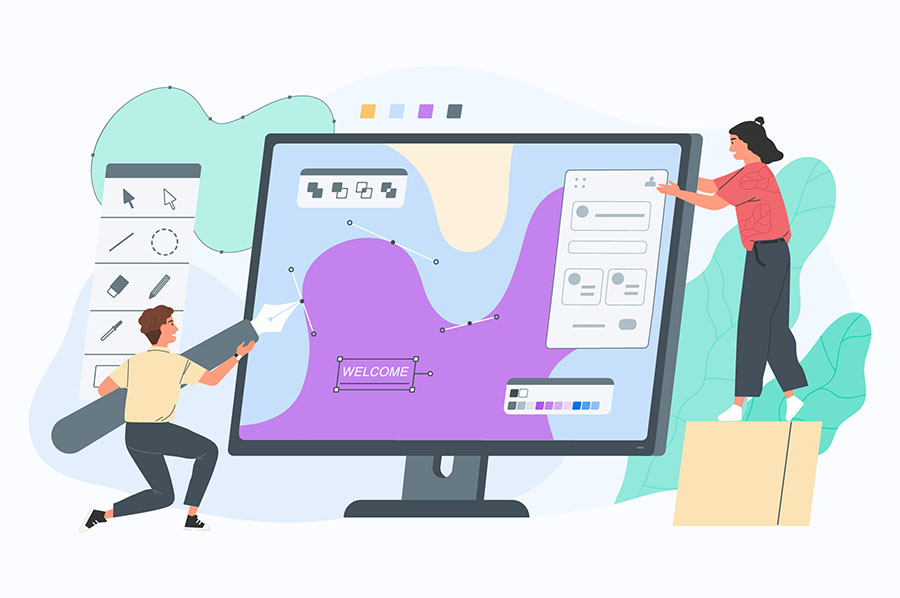
When you actively search on the web, you will easily find some wonderful tutorials about web design. Many of those tutorials use software, so you may not be getting all the good stuff. So here are some great tips with no catch at all.
If you are designing a website, choose proper graphics. Do not use bitmap for your images as they take up too much space. Use PNGs for images over 256 colors for text buttons and the like or use GIF files for images smaller than 256 colors. JPEG files are best for photographs.
Avoid using frames on your site. They used to be great in the early web design days, but they had many flaws. Readers have difficulty bookmarking and scrolling websites with frames. It is simple to design your page so visitors can navigate through it.
If your website is going to attract visitors, it needs to be easy to navigate. Display links prominently so that they can be easily found. Menus can make navigation on your site easier. Have links to the main pages available on every page of your site so visitors can always find their way around.
If you want to have a successful website, you need to design it in a way that works for all browsers. It is crucial you test out your site that and see that all pages show up properly in each browser. What works in Chrome may not present properly in Safari, Internet Explorer or Firefox. Therefore, check to see that all pages display correctly in all the large browsers prior to your site going live.
When designing a large website, include the ability to search throughout the site. Put in a search box in the right-hand corner up on top of the homepage, as this allows the site visitors to type in a single keyword that shows up anywhere on your site. You can get a search bar from Google or FreeFind.
Photoshop is a great tool that novice designers should invest in to help make better looking web designs. These programs make it easier to create professional, attractive content for websites. If you don’t use such a program, it can be difficult and take a lot of time to learn how to design a high-quality site in a hurry.
No matter how flashy your website is, it is vital that you keep the sizes of your website’s files small. Your file sizes have a lot to do with the speed of your site loading. You should strive to make sure that your website loads as fast as it possibly can. Remember that there are still lots of people who do not have high speed Internet. Perform a test of your website to be sure that it will load quickly on every speed of internet connection.
Popular Browsers
It is vital that you are aware of the fact of your need to design your website so that it displays properly on a range of different Internet browsers. Every browser is different; as a result, each can interpret your design in a slightly different way. While sometimes these differences do not make a difference, there are times when it can transform the look dramatically, or create an entirely different experience for your site visitors. It is easy to discover the most popular browsers. Make sure to beta-test your site on all popular browsers, including those used on mobile devices.
Review your site for broken links regularly. Check links on a regular basis as you are designing, and make sure to perform a check before uploading your site to the server. You want to make sure everything you put up is working as people become deterred when they see content on a site that is faulty, this can make them choose to never come back. To prevent this from happening, do a quick check to ensure everything is working properly.
If you are fortunate enough to have the funding for a major investment into your site, this does not mean that is a wise thing to host the site on your own. Having an experienced team of experts running your server for you, including upgrading the software and dealing with hardware failure, will leave you time to focus on your site itself.
Subscribe to a newsletter with information on web design to keep you up to date on the latest trends. Regardless of the experience level, newsletters are valuable for all web designers.
As you select a hosting service for your website, you need to make sure you know everything that is included in the package. Make sure that you understand the bandwidth, storage space, CPU usage, and any extras that come with the offer. Know what you’ll end up with, if you decide to go forward with it.
Proofread everything! You don’t want anyone to have trouble understanding what you meant. Errors make your site look careless and unprofessional and this, in turn, will not encourage a positive reputation for your site.
Web Design
A basic layout should be used for your site in the beginning, this way you can get an understanding of the basics of web design. This basic design will help you grasp the easy stuff, which will prepare you to tackle more advanced web design principles in time.
Keep your taglines visible, and include them on every page in your domain and sub-domains. Use large or bold font so that your visitors notice these taglines right away. The tagline for your pages should give the potential customer basic information about what your website is about.
With all that you learn, the confusion you may have about building a site will disappear and become second nature to you. These tips were the pieces. Use the knowledge you’ve just been given to start building a wonderful website.